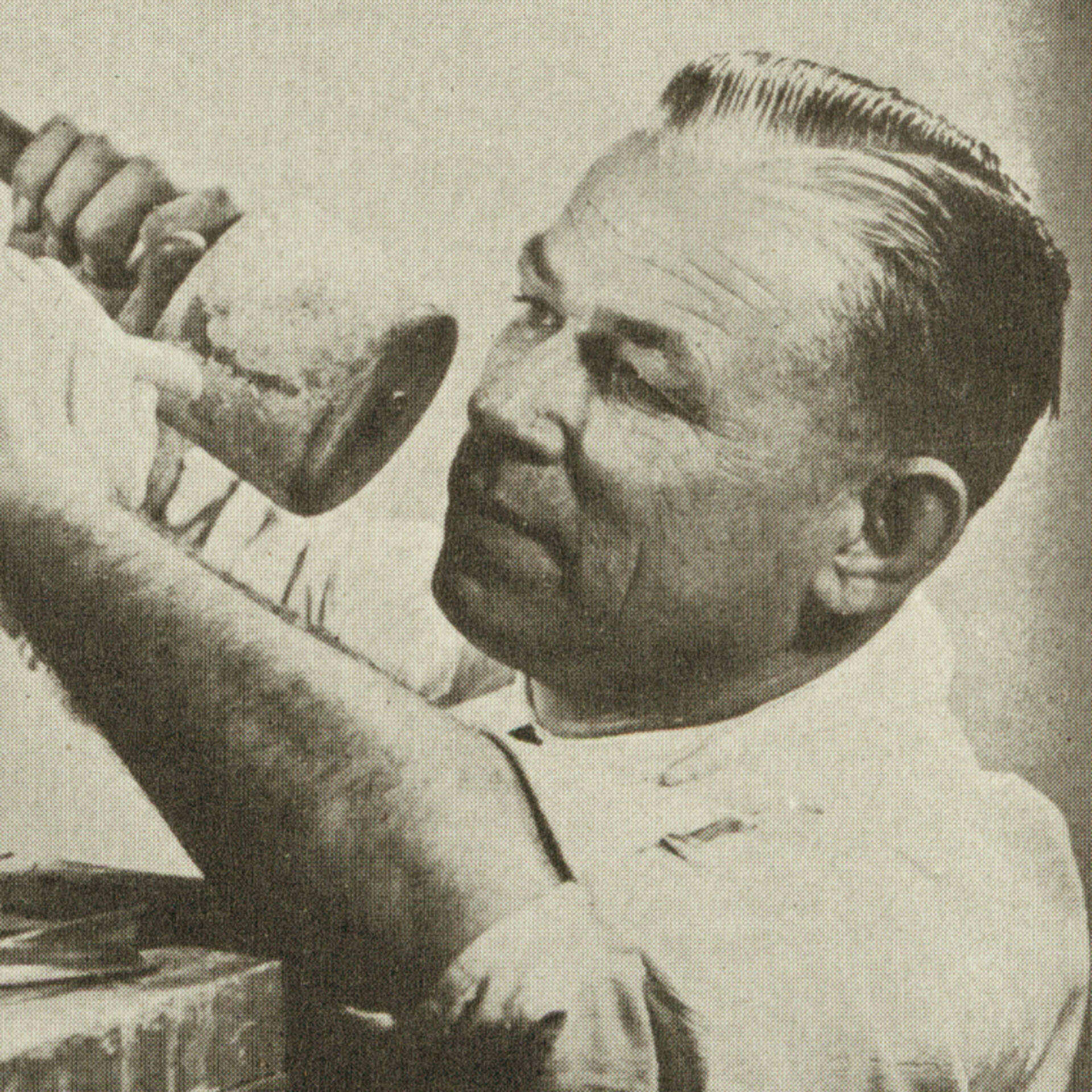William Ehrich
(1897-1960)
Born: Koenigsberg, East Prussia
William Ehrich was born in Koenigsberg, East Prussia in 1897. He trained in a woodcarver’s shop there and attended the Koenigsberg Fine Arts Academy on scholarship. In 1929 his family immigrated to the United States from Germany and settled in Buffalo. In 1971, Harold Olmsted wrote a brief biography for the Burchfield Center’s exhibition, Our Legacy of Art, stating: “‘Bill’ Ehrich came to this country from Germany after the First World War, most of which he passed pleasantly, so he told me, in a Russian prison camp doing heads of Russian officers!”
Professionally Ehrich first worked at Kittinger as a carver, while at home he carved wooden sculptures. According to the biography written by Nancy Ehrich Martin, Archivist at the University of Rochester, Ehrich met the “gift shop owner Pitt Petri who convinced him that smaller articles would be easier to sell. William created a set of small animals including a duck, penguin, cat, bear, rooster, and deer with fawn. From these prototypes he made plaster molds that he used to mass produce delicate clay copies, most of which were finished with a bright white glaze. He sold these china animals by the hundreds.” (http://ehrich.us/) His interest in ceramics extended to making vessels—an illustrated catalog can be viewed on the same Web site. This post-World War II Shallow Dish is illustrated as catalog #58.
Ehrich taught sculpture at the Art Institute of Buffalo from 1931 to 1937. Under the Federal Arts Project (FAP) of the Works Progress Administration (WPA) he produced public art for the Buffalo Zoo, “which saw significant expansion with WPA assistance from 1938 through 1942. William supervised a cadre of sculptors and painters who created murals in the reptile house, sgraffito on the animal house exterior, and the concrete animals at the zoo entrances that are still there today. Unfortunately none of the records of the Buffalo Zoo or the National Archives document which works are specifically his, but his notes suggest that he created the animal figures on a fountain, the sgraffito, and some of the animals at the zoo entrances.” In 1939, Ehrich and his wife moved to Rochester where he taught sculpture in the College for Women at the University of Rochester’s Prince Street Campus, which also housed the Memorial Art Gallery. He was a member of the Patteran Society and an extensive list of his sculpture and commissions can be found in his Web site biography.
N.W.
